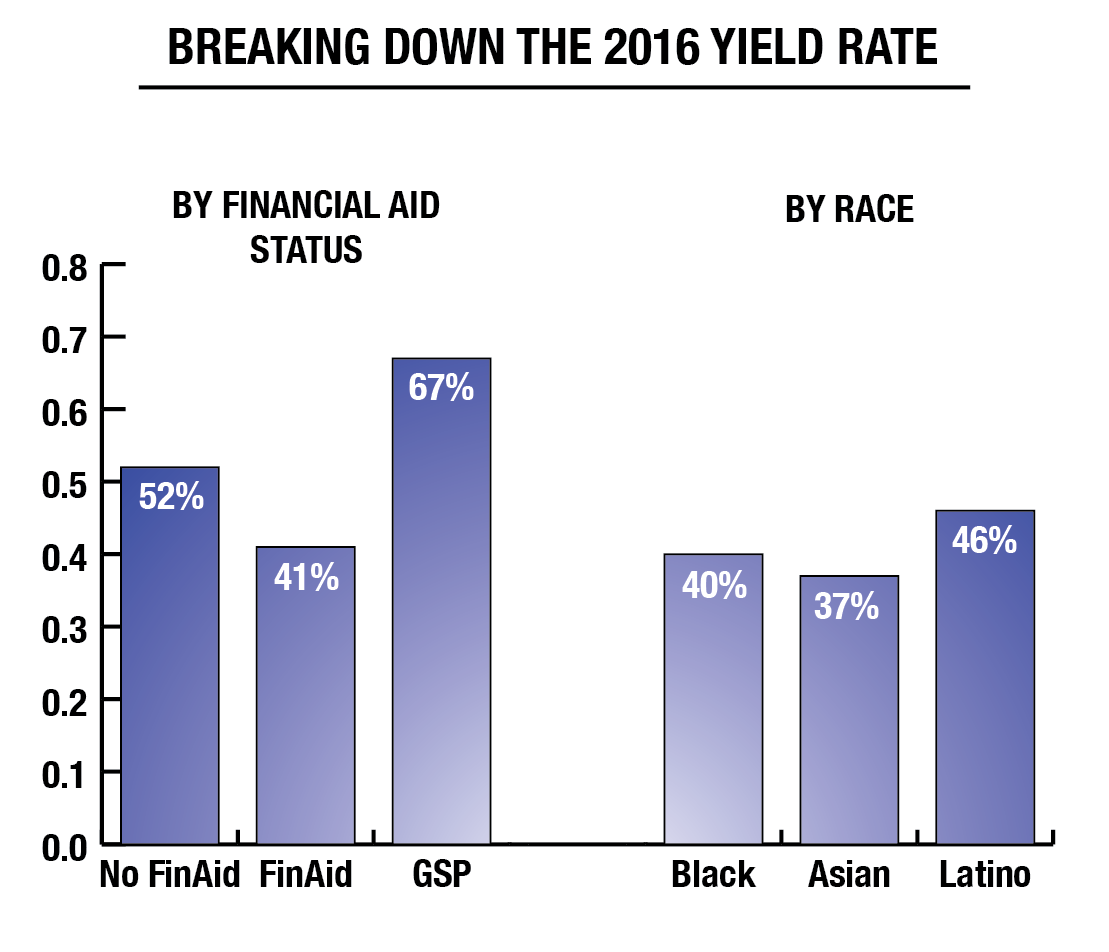
The admissions yield remained constant, with a disparity in yield for those who did and did not apply for financial aid.
Georgetown University’s admissions yield for the Class of 2020 remained steady, increasing slightly to 48 percent from last year’s rate of 47.6 percent, as of May 2.
The admissions yield refers to the number of accepted students who choose to enroll in the university.
The target enrollment for each class is 1,580 in accordance with the 2010 Campus Plan agreement. This year, out of the 3,276 students offered places in the Class of 2020, 1,574 accepted.
Due to the expected fluctuations in acceptances of admissions offers because of deferrals or withdrawals of acceptances, Dean of Undergraduate Admissions Charles Deacon said around 50 students will come off the waitlist and be offered admission.
Early action yield, which came in this year at 51 percent, tends to vary from the regular acceptance yield. This year, early action yield came in lower than last year’s rate of 56 percent.
At 52 percent, the yield for those not requesting financial aid was higher by 11 percent compared with those requesting financial aid, whose yield stands at 41 percent. Georgetown commits itself to meeting full demonstrated financial need for students requesting financial aid.
Deacon attributed this difference to the disparity in ability of various socio-economic classes to afford Georgetown’s tuition of around $48,000 per year, before room, board and fees are included.
“If you were to look at demographics, in many ways what you see here is a microcosm of what’s happening in the country. It does say that Georgetown truly is a national university and it does reflect that changes of the country. It is still skewed toward the more affluent, because of the price tag and because the highest-achieving population is the more affluent population,” Deacon said. “That’s why the pressure is on all of us to try to level the playing field and provide more upward mobility for students of lower-income areas.”
The yield for the 150 students admitted into the Georgetown Scholarship Program, the goal of which is to level that playing field by assisting students receiving scholarships, stands at 67.31 percent. GSP Program Director Missy Foy attributed the high yield rate to the benefits provided by the program, which assists many first-generation college students.
“We are very pleased with the results,” Foy wrote in an email to The Hoya. “We’re increasingly hearing that GSP students’ enhanced scholarships as well as the assurances of a robust program make a significant difference in college choice.”
Additionally, Georgetown’s yield fluctuated in various minority groups. For black students, the yield stands at 40 percent, in the Asian-American community yield is at 37 percent and in the Latino and Hispanic community yield is at 46 percent.
Despite the overall lower yield for minority groups, Deacon said the number of applications the university received from these groups increased.
“The applicant pool itself was a little over 20,000, which is up about 3 percent from last year, but it was up primarily from students of color,” Deacon said. “The majority population, which is the white population, is continuing to go down and is being replaced actually, more than being offset, by the increasing students of color.”
According to Deacon, the slight increase in overall yield from years past is due in part to Georgetown’s location. The yield has increased by 5 percent since 2009.
“The Georgetown brand is getting better,” Deacon said. “I think that we are situated in a very desirable location and essentially we are the school to apply to.”
Deacon added that social media as well as the Georgetown Admissions Ambassador Program’s open houses for admitted students has helped increase yield.
“At the end of the day, the GAAP open house has really sealed the deal for a lot of people,” Deacon said.
Deacon added that yield tends to vary by geographic location, which is due to factors such as students with legacy status or recruited athletes because these students tend to come from closer geographic regions.
“California is by far the largest state in terms of applicant pool. New York is the second and New Jersey is the third,” Deacon said. “But our yield rate is better in New Jersey and New York than it is in California.”
Despite the increase from last year, Deacon said Georgetown might compete better if the university were able to dedicate more money toward helping those in the middle income range. Deacon attributed the deficit in this population to the prospective students’ financial aid need that might not be covered by Georgetown.
“If there were a place we would really need to work at to really do much better, it would probably be in that middle-income population where financial aid is a particularly difficult issue,” Deacon said. “Would we compete better if we had more money? I think probably, we would.”




















